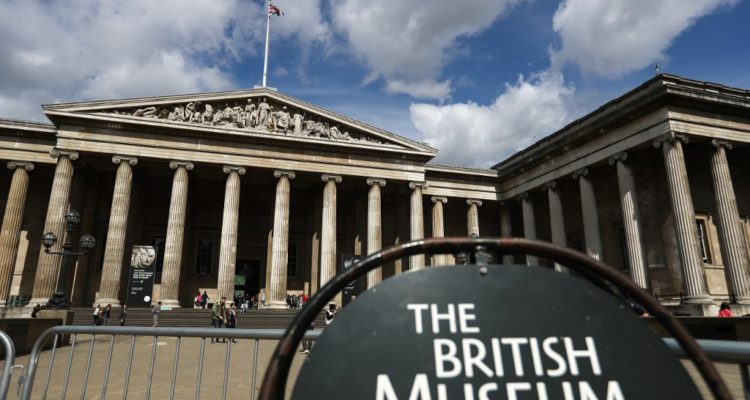El Museo Británico de Londres retiró de su pedestal el busto de su fundador, Hans Sloane, para exponerlo junto a otras piezas que ponen en contexto su pasado esclavista, informó el martes la institución.
La efigie de Sloane fue desplazada para exponerla tras un cristal de seguridad donde se le presenta como “coleccionista” y “propietario de esclavos”.
“El compromiso con la verdad es crucial cuando nos enfrentamos a nuestra propia historia”, afirmó Hartwig Fischer, director del Museo Británico, en un comunicado.
Reconocer la relación de Sloane “con la esclavitud y la trata de esclavos” permite “destacar la complejidad y ambigüedad de ese período: fue médico, coleccionista, académico, benefactor y propietario de esclavos”, subrayó.
La iniciativa surgió como respuesta al movimiento Black Lives Matter, generado por la muerte del estadounidense negro George Floyd a manos de un policía blanco, que llevó al Reino Unido a cuestionar su pasado colonial y los símbolos de este.
En junio, un grupo de manifestantes en Bristol, en el suroeste de Inglaterra, derribo y tiró a un río la estatua del comerciante de esclavos Edward Colston, desatando llamados a que se retirasen las efigies de otros negreros.
En el Museo Británico, afirmó Fischer, “continuaremos explorando nuestra historia y lo haremos en colaboración con personas de todo el mundo para reescribir como iguales nuestra historia compartida, complicada y, a veces, muy dolorosa”.
Pese a todo, “seguimos reconociendo la visión radical de Sloane de dar acceso público universal y gratuito a la colección del museo y el beneficio público que se genera a través del Museo Británico”.
Médico nacido en Irlanda en 1660 y fallecido en Londres en 1753, Sloane utilizó la fortuna de su esposa, la rica viuda del propietario de una plantación de azúcar en Jamaica, para reunir la colección de historia natural que constituyó la base del British Museum.
Otros objetos de la colección serán también puestos en su contexto histórico.
“Queremos situarla en un contexto más amplio, que es obviamente un contexto realmente difícil”, el de la “explotación” realizada por el Imperio Británico, afirmó Neal Spencer, un curador de la institución, al diario Daily Telegraph.
View this post on InstagramA post shared by British Museum (@britishmuseum) on







 Enviando corrección, espere un momento...
Enviando corrección, espere un momento...





